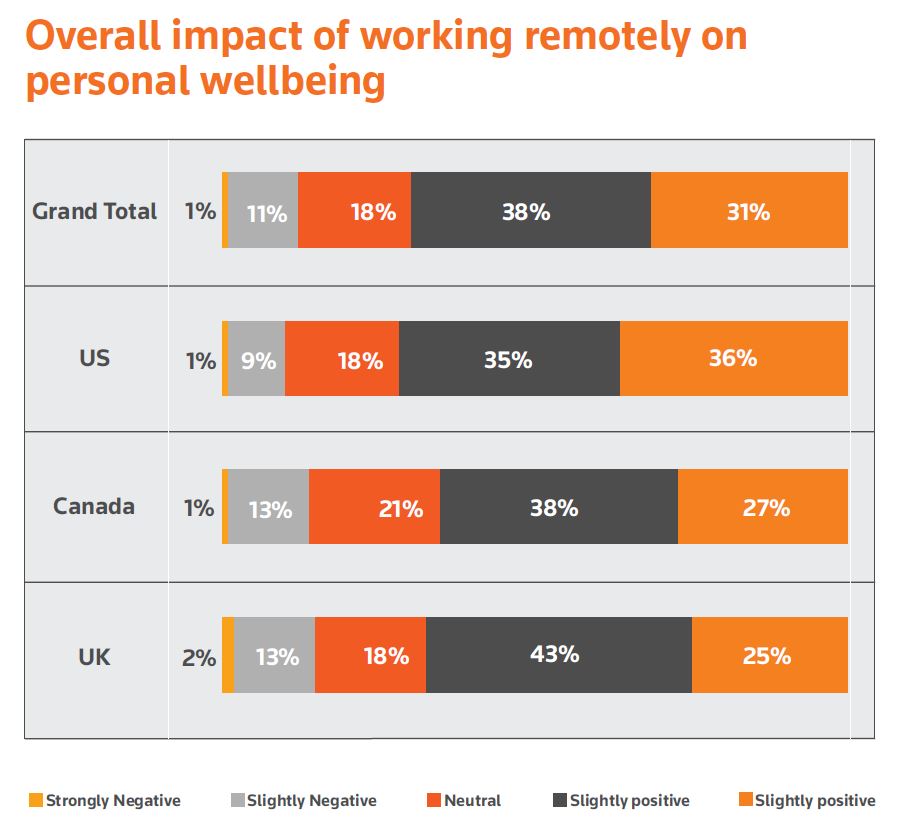Prior to the current pandemic, working from home or telecommuting was seen by many office professionals as a significant, albeit rare, perk of their professional life.
Yet, working from home — and especially the illusionary image of someone lounging in pajamas with a laptop propped up on a comfortable couch, coffee in hand — seemed like an unrealistic goal for many even as it was seen as a prime example of the ultimate work-life balance.
But as the COVID-19 pandemic descended on the globe and businesses worldwide hurried to transition their office employees to work-from-home professionals, the realities of remote working — both good and bad — came sharply into focus as the leisure-time illusion melted away.
In truth, many employers and employees quickly saw that remote working, especially on a large scale as required by the pandemic, presented several challenges to workers and their companies. Into this, Thomson Reuters has published a new report, Pain Points Emerge, But Professionals Revel in Working from Home, that examines the prevalent attitudes in the work from home environment. To conduct this survey, Thomson Reuters queried 996 business professionals from a mix of industries and roles in companies with an annual revenue of at least $100 million in the U.S., Canada, and the U.K.
While the enormous push to have workers work remotely during the pandemic did allow large swaths of professionals to work mostly successfully throughout the pandemic, there were pain points that emerged, the report noted.
Indeed, some of the key takeaways from the survey report noted that while many professionals greatly enjoyed the increased flexibility that working from home brought, some lamented other problems, such as decreased efficiency and more numerous (and personal) distractions.

Significantly, however, just 10% of respondents said they preferred their previous working practices because they felt it was a more productive or efficient environment.
Yet, when the question was turned to the social interactions of the office, more than half (54%) of all respondents (including 69% of those in the U.K.) preferred their previous office work environment for in-person professional and social interaction. Still, almost 70% of respondents said they desired to keep at least some aspects of their new remote working practices once the pandemic is behind us.
Pain points around technology & collaboration
More specifically — and not surprisingly — a vast majority (83%) of respondents said they experienced at least one technological issue that impacted their work as they began to work remotely. Further, more than two-thirds (68%) of all respondents agreed that the technology they used to do their job has worked well; yet that means that fully one-third reported challenges with technology that negatively impacted their productivity and efficiency.
You can download the full Thomson Reuters report, Pain Points Emerge, But Professionals Revel in Working from Home, here.
Over the past six months, the quality of collaboration within and between teams generally stayed the same or improved, the report noted. When asked about collaboration — a factor you would assume was greatly helped by all those Zoom meetings — the vast majority of U.S. workers (93%) surveyed said they found their ability to collaborate either improved or stayed the same by utilizing virtual platforms, according to the survey. When it came to collaboration with teams, however, more respondents said deterioration occurred between teams (17%) rather than within them (8%).
Looking beyond the pandemic
As the months of working remotely approached the end of 2020, it’s clear that definitive pain points have emerged. It’s also clear that many issues need to be addressed before the ideal of working from home can truly be realized. In truth, the good and the bad of remote working is still being felt months into this process, and will likely continue for the foreseeable future as the pandemic continues into 2021.
In fact, it appears from the survey that every time one benefit of this new remote working world took root, a weed or two of challenges sprouted right along with it.
For example, as many school districts begin relying on remote or hybrid learning models for their students — which was a positive to keep homebound children engaged in learning — those professionals with children working from home and feeling their attention already divided, felt even greater pressure.
And again, the social pull of the workplace continued to be strongly felt as its loss was identified as a major pain point. About one-third (35%) of survey respondents — including 41% of Canadian respondents — said they missed social interaction with their colleagues at work.
Still, even with these pain points, it seems that professionals have largely adapted to the new reality of working remotely, all the more remarkable considering how quickly this transformation was done.
Now with an eye toward possible vaccines on the horizon, the world may be readying itself to pivot on a moment’s notice again. This time, however, organizations can be more confident of their workers’ agility to thrive in even the most difficult times. And those companies that can learn from this experience by investing in solutions to further streamline the remote working experience are likely to gain an even happier, more productive workforce.







